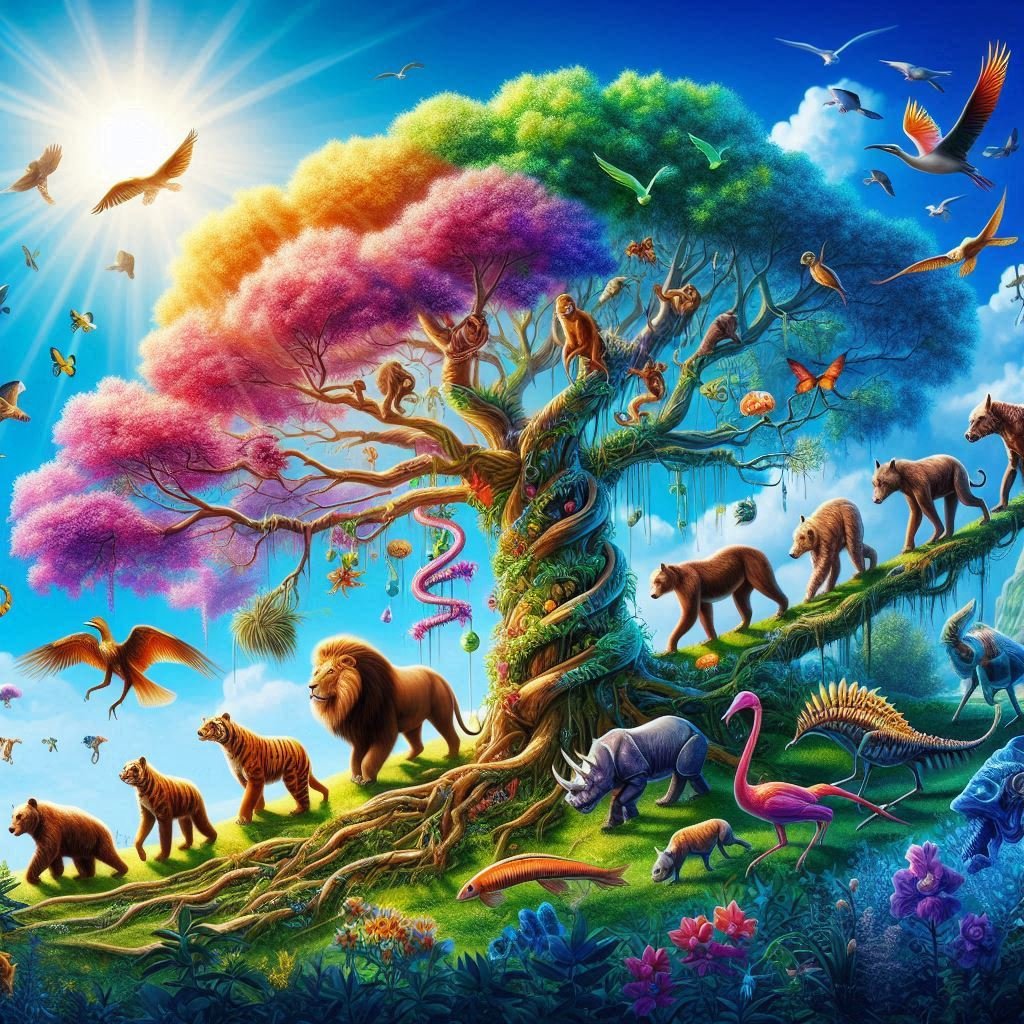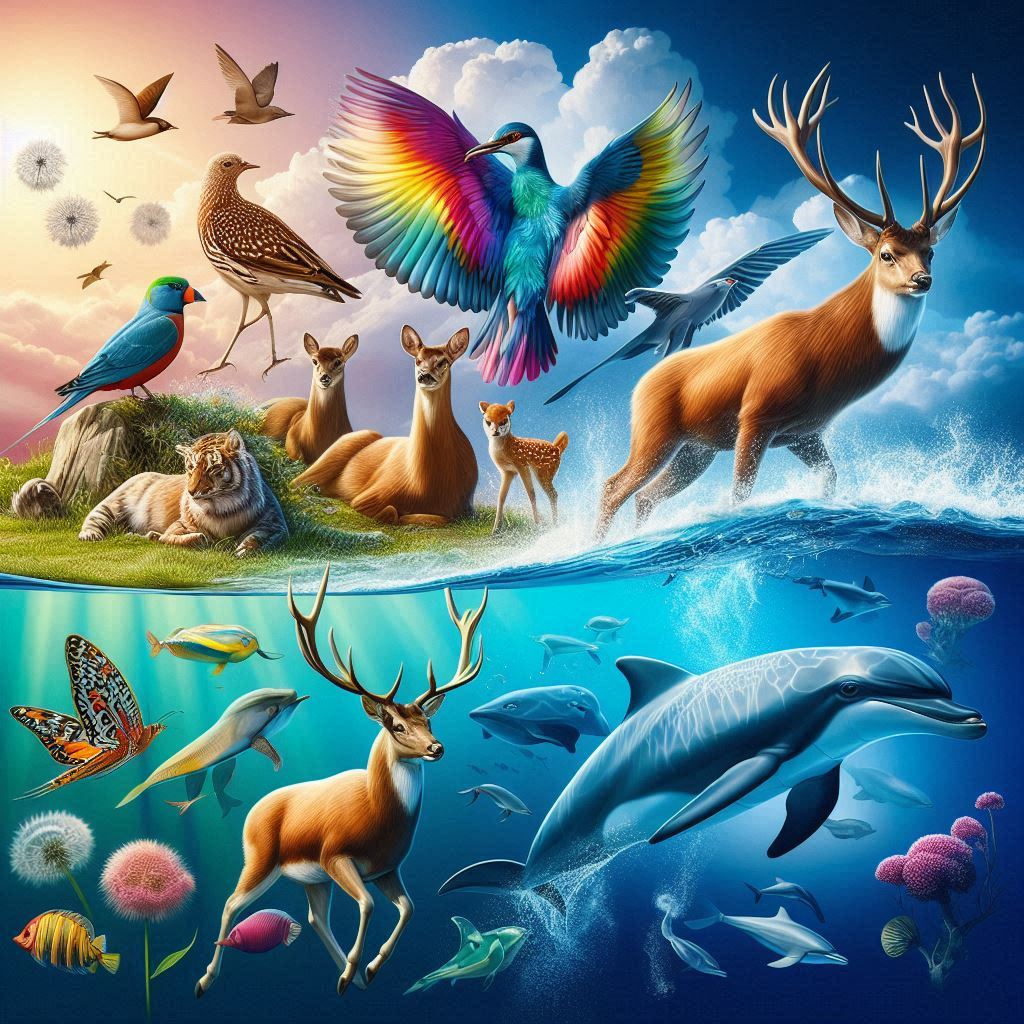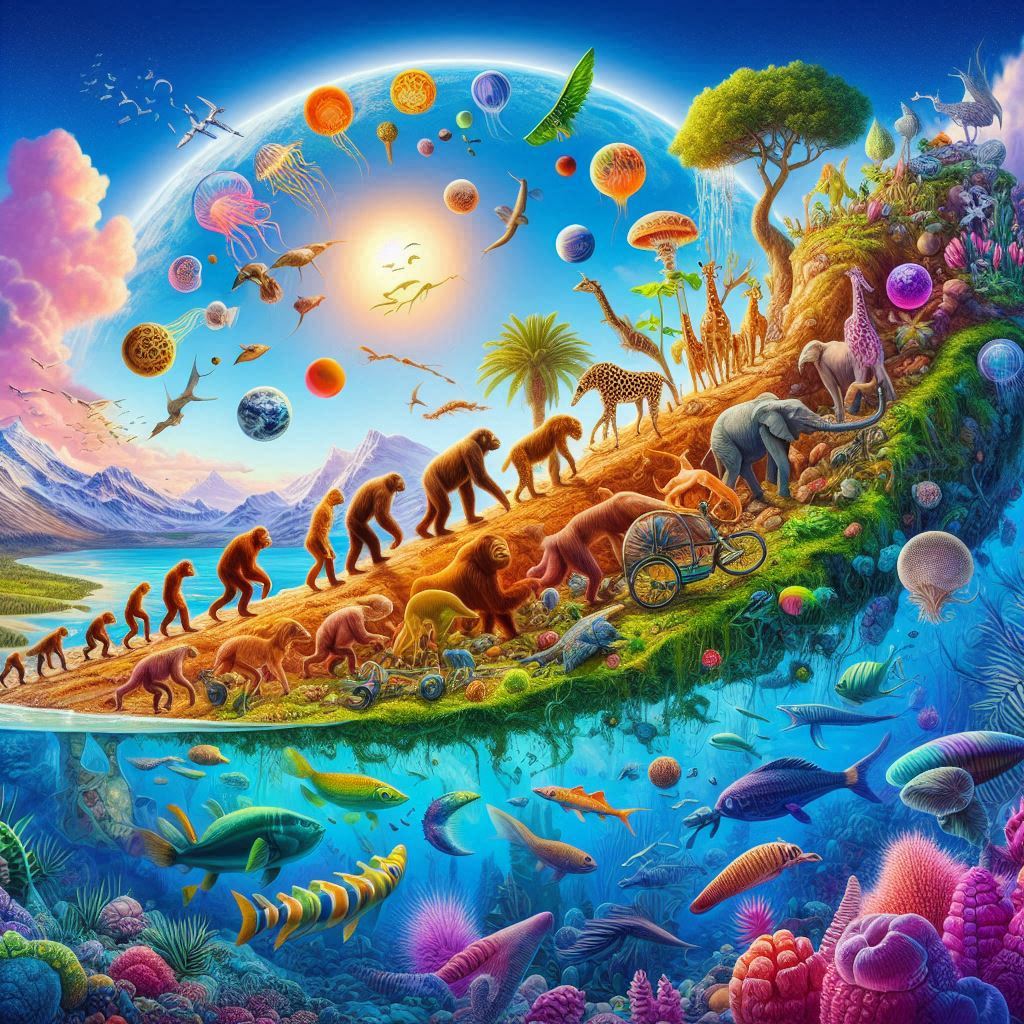Evolution is one of the most profound and fascinating concepts in the world of science. It is the process by which species change over time, adapting to their environment through a gradual accumulation of small genetic variations. Over millions of years, these tiny changes can lead to the formation of new species, some of which may be vastly different from their ancestors. Understanding evolution is like unraveling a story that has been unfolding for billions of years. It’s not just the story of life on Earth, but also of the forces that shape the diversity and complexity of life.
At the heart of evolution lies the concept of natural selection, famously articulated by Charles Darwin in the 19th century. However, the concept of evolution extends beyond Darwin’s work, incorporating discoveries in genetics, molecular biology, and paleontology. In this comprehensive exploration of evolution, we will delve into its mechanisms, the evidence supporting it, its implications, and how it has reshaped our understanding of the natural world.
The Origins of Evolutionary Theory
Before the concept of evolution became widely accepted, most societies held the belief that life was static and unchanging. Many ancient civilizations subscribed to creation myths, where life was either created by divine beings or existed in its present form since the beginning of time. However, by the time of the 17th and 18th centuries, thinkers began to question these ideas, searching for natural explanations of life’s diversity.
The groundwork for evolutionary theory was laid by naturalists who observed patterns in nature that hinted at change over time. In the late 18th century, the French naturalist Jean-Baptiste Lamarck proposed an early theory of evolution, which suggested that organisms could acquire traits during their lifetime and pass those traits on to their offspring. While Lamarck’s idea of inheritance was ultimately proven to be incorrect, his work sparked interest in the possibility that species could change over time.
Charles Darwin and the Birth of Natural Selection
It wasn’t until the mid-19th century that the modern theory of evolution began to take shape, thanks in large part to Charles Darwin. Darwin’s landmark work, On the Origin of Species, published in 1859, revolutionized biology by providing a scientific explanation for how evolution occurs. Darwin’s theory of natural selection, built upon the observation that organisms produce more offspring than can possibly survive, suggested that the environment “selects” those individuals with advantageous traits that increase their chances of survival and reproduction. Over generations, these beneficial traits become more common within a population, leading to the gradual evolution of new species.
Darwin’s ideas were revolutionary because they challenged the prevailing belief in special creation, where each species was thought to be created separately and unchanging. Instead, Darwin proposed that all life shares a common ancestor, and that species evolve over time through the process of natural selection acting on variations in traits.
The Mechanics of Evolution: How It Works
At the core of evolutionary theory is the idea that genetic variation plays a crucial role in shaping the traits of organisms. But what causes this variation, and how do these changes accumulate over generations? To answer this, we must explore the underlying mechanics of evolution.
- Genetic Variation: Every population of organisms contains genetic diversity. This diversity arises from mutations—random changes in the DNA sequence. Mutations can occur due to errors during DNA replication, environmental factors like radiation, or even through viral infections. While most mutations are neutral or harmful, some can be beneficial, providing an advantage in the organism’s environment.
- Inheritance: Genetic variation is passed down from one generation to the next through inheritance. This occurs via the transmission of DNA from parents to offspring. In sexually reproducing organisms, offspring inherit half of their genetic material from each parent. This genetic recombination during reproduction creates new combinations of traits in each generation, contributing to the genetic diversity of the population.
- Natural Selection: Natural selection acts on the genetic variation present within a population. Organisms with traits that provide an advantage in their environment are more likely to survive and reproduce, passing on those advantageous traits to their offspring. Over time, these traits become more common within the population, while less beneficial traits fade away.
- Genetic Drift: In addition to natural selection, genetic drift is another force that shapes the genetic makeup of populations. Genetic drift refers to random changes in the frequency of alleles (different versions of a gene) in a population. While natural selection tends to favor beneficial traits, genetic drift can cause traits to become more or less common due to random chance, especially in small populations.
- Gene Flow: Gene flow occurs when individuals from different populations interbreed, introducing new genetic material into the gene pool. This process can increase genetic diversity within a population and may lead to the spread of beneficial traits across different populations.
- Speciation: Over long periods of time, the accumulation of genetic changes in a population can lead to speciation, the formation of new species. This can occur when populations become geographically isolated, such as when a river or mountain range divides a population. Over time, the isolated populations may accumulate enough genetic differences that they can no longer interbreed, even if they come into contact again.
The Evidence for Evolution
The theory of evolution is supported by a wealth of evidence from many different fields of science. Some of the key lines of evidence include:
- Fossil Record: Fossils provide a window into the past, allowing scientists to trace the history of life on Earth. The fossil record shows a pattern of gradual change over time, with older fossils displaying simpler forms of life and more recent fossils showing more complex organisms. Transitional fossils, such as Archaeopteryx, which exhibits characteristics of both birds and reptiles, provide strong evidence for the gradual evolution of species.
- Comparative Anatomy: The study of the structure of organisms reveals similarities that point to common ancestry. For example, the forelimbs of vertebrates, such as humans, bats, and whales, have a similar bone structure despite being used for different functions. This is known as homologous structure, and it suggests that these organisms share a common evolutionary ancestor.
- Embryology: The study of embryos provides further evidence of common ancestry. Many species exhibit similar embryonic development stages, indicating that they share a common origin. For example, the embryos of humans, chickens, and fish all possess gill slits and tails during early development, a trait inherited from a common ancestor.
- Molecular Biology: The study of DNA and proteins has revealed even more compelling evidence for evolution. The genetic code is universal across all living organisms, suggesting that all life shares a common origin. Moreover, the comparison of DNA sequences between different species has shown that closely related species have more similar genetic material, supporting the idea of common descent.
- Biogeography: The geographic distribution of species also supports the theory of evolution. For instance, the unique flora and fauna of isolated islands, such as the Galápagos Islands, have led to the discovery of numerous species that evolved in response to their specific environment. The diversity of life in different regions of the world can be explained by the process of adaptive radiation, where a single ancestral species diversifies into many different species, each adapted to a different ecological niche.
Modern Evolutionary Synthesis
While Darwin’s ideas laid the foundation for evolutionary theory, they lacked a detailed understanding of genetics. In the early 20th century, the discovery of Mendelian genetics and the development of population genetics brought a new dimension to the theory of evolution. The modern evolutionary synthesis, which emerged in the 1930s and 1940s, integrated Darwin’s theory of natural selection with the principles of genetics, providing a more comprehensive explanation for how evolution occurs.
The modern synthesis showed that natural selection acts on genetic variation within populations, and that the genetic material responsible for these variations is inherited according to Mendelian laws. This integration of genetics with Darwinian evolution revolutionized our understanding of how species change over time.
The Role of Evolution in Shaping Life on Earth
Evolution has played a central role in shaping the diversity and complexity of life on Earth. From the first single-celled organisms to the vast array of plants, animals, fungi, and microbes that inhabit our planet today, evolution has been the driving force behind the development of life.
The process of evolution has led to remarkable adaptations in species, allowing them to thrive in a wide range of environments. For example, the long neck of the giraffe is an adaptation to browsing on tall trees, while the wings of birds have evolved for flight. Some species, like the cheetah, have evolved incredible speed to catch prey, while others, like the octopus, possess advanced camouflage abilities to avoid predators.
One of the most remarkable outcomes of evolution is the emergence of human beings. Humans share a common ancestor with chimpanzees and other primates, and our evolutionary history can be traced through fossil evidence and genetic data. Over millions of years, our ancestors developed traits such as bipedalism, large brains, and complex social structures, setting us apart from other species.
The Future of Evolution
Evolution is an ongoing process, and it continues to shape life on Earth today. While many species are still adapting to their environments, human activity is increasingly influencing the direction of evolution. For example, climate change, habitat destruction, and pollution are putting pressure on species to evolve quickly in response to new challenges. In some cases, humans are actively shaping evolution through practices like selective breeding and genetic modification.
As our understanding of genetics and evolutionary biology continues to deepen, we may one day have the ability to influence evolution in more direct ways. This raises important ethical questions about how we should use our knowledge of evolution and genetics to shape the future of life on Earth.
Conclusion: Evolution as a Constant Process of Change
Evolution is a dynamic, ever-changing process that has shaped the vast diversity of life on Earth. From the first simple organisms to the complex forms of life we see today, evolution has been the driving force behind the development of new species and adaptations. It is a process of constant change, driven by the forces of natural selection, genetic variation, and other factors.
The theory of evolution has revolutionized our understanding of the natural world, providing a framework for understanding the history of life and the mechanisms that drive biological change. It reminds us that life is not static, but rather a constantly evolving phenomenon, and that our place in the web of life is shaped by the same processes that have shaped all living things. Evolution is not just a theory, but a fundamental truth about the nature of life on Earth, one that continues to unfold in ways we are only beginning to understand.












